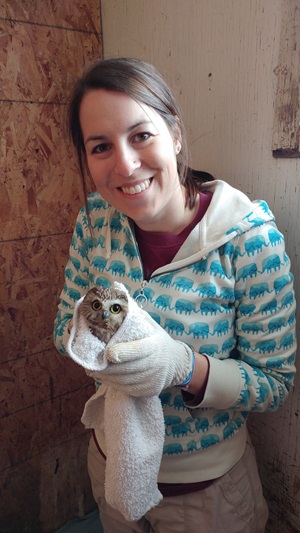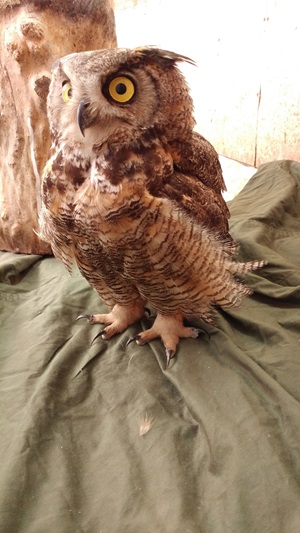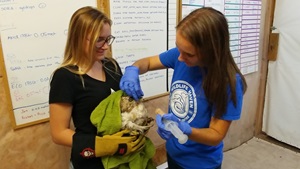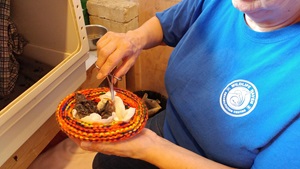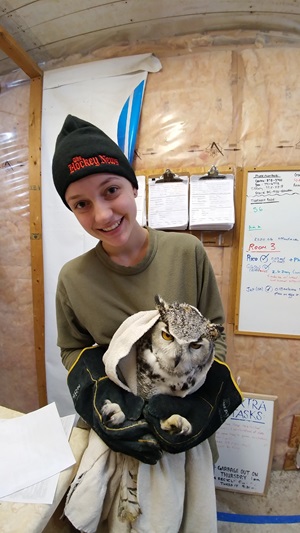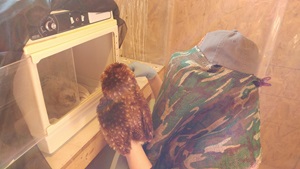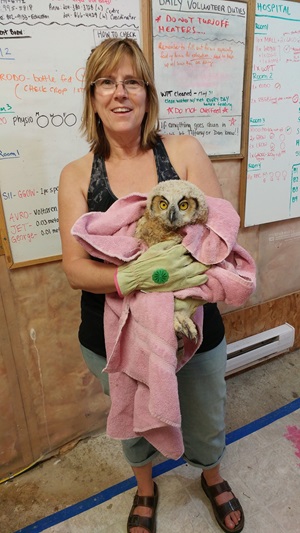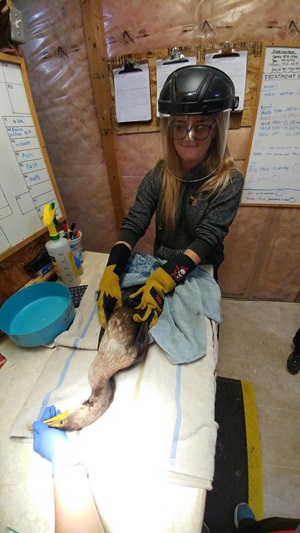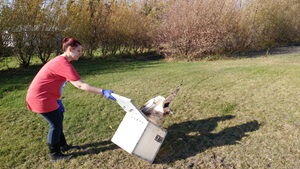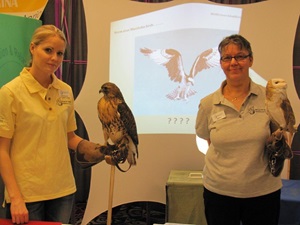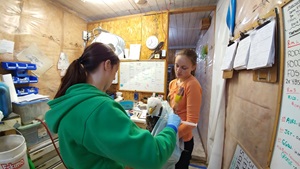From bobcats to bald eagles, from salamanders to snowy owls
Volunteer-run center nurses Manitoba’s injured, sick and orphaned wildlife back to health
It can top 50 miles an hour, it can bathe while in mid-flight, and it’s been recorded flying more than a mile above the earth’s surface.
But even a go-getter like the chimney swift needs a hand now and then.
“Last year, someone found four young chimney swifts—which are an endangered species—and brought them to us,” says Roger Perron, project manager of the Wildlife Haven Rehabilitation Centre in Île-des-Chênes, Manitoba. “At that time of the year, they needed feeding every 20 minutes—so we had volunteers come in and do that round the clock.
“And when they were ready for release, it was already late in September, and chimney swifts in Manitoba had already gone south,” he adds. “But we partnered with an organization in southern Ontario (Swift Care Ontario), we brought them to Hamilton, and got them released with other chimney swifts in time for them all to migrate back south.”
For these four tiny swifts and about 1,700 animals like them every year, Wildlife Haven provides nurture and care. Established in 1984, and operating out of a decommissioned dairy barn for the past decade, Wildlife Haven rehabilitates injured, sick and orphaned wildlife for their return back to the wild.
Wildlife Haven has arrangements with trucking companies, regional airlines and the RCMP to take in animals in distress from all over Manitoba—including shorebirds, raptors, rabbits, foxes, snakes and salamanders.
The center also has partnerships with veterinarians in nearby Winnipeg to provide urgent medical care. And its 90 volunteers include university students majoring in zoology and environmental science.
Image gallery: Wildlife Haven Rehabilitation Centre
In 2017, Wildlife Haven was able to release about a third of the animals it accepted back into the wild.
“We had a bobcat who’d been found malnourished and living in a woodpile—he looked like a cat, but roared like a lion. And we’ve seen a lot of snowy owls in the past few years; usually they’re way up north,” says Perron. “We can’t save all of them, but we do our best. And whatever we take in, we try to keep as wild as possible.”
In recent years, Wildlife Haven has launched a $2.9-million capital campaign to build a new campus in Île-des-Chênes, which would include a new wildlife hospital, waterfowl overwintering building, raptor flyways, wildlife enclosures and an amphitheater.
Enbridge is committed to environmental protection in the areas near our operations and projects, including the nearby Line 3 Replacement Program. In 2017, we invested more than $550,000 in community-strengthening initiatives across Manitoba, and our recent $10,000 donation to the Wildlife Centre will help establish the organization’s new permanent facility.
That new home will also give a base of operations for the Wildlife Haven’s educational outreach program aimed at schools and the general public. The stars of the show are the wildlife ambassadors—animals that can’t be released back into the wild because of their injuries—with Max the great horned owl as the headliner.
“He’s a majestic bird,” notes Perron. “A couple of years ago, we put out a children’s book in French and English, and at our bookstore launch in Winnipeg we signed the book with an imprint of Max’s foot.”



